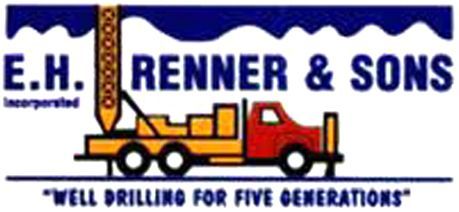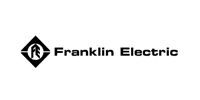Water Chlorination Solutions
Request Estimate
Hero Request Form
Expert Chlorination Services by E H Renner & Sons
At E H Renner & Sons Inc, we specialize in providing professional chlorination services for your well water systems. With over a century of experience, our fully licensed, insured, and bonded team ensures your water remains safe and clean.
Located in Elk River, MN, we offer:
- Free same-day estimates
- Manufacturer warranties
- Same-day services
- 90-day workmanship warranty
- Locally and family-owned expertise
- Prime-quality products
Contact us today to learn more about our chlorination services.
Iron Bacteria and Manganese Bacteria
Iron Bacteria is a bacterium that's not harmful to ingest when it has infected a potable well (fit to drink). However, it can become a very big nuisance for the homeowner.
This bacteria grows as a slime and has bio-film which can reduce the inside diameter of pipes, cause problems in filters and water heaters and give off a sulfur smell. It can cause iron stains and iron can seep through a water softener.
There's something called a Manganese Bacteria and it's very similar to an iron bacteria with slim building, stinky, nuisance.
E H Renner & Sons Is Not Responsible for Any Problems You May Encounter When Chlorinating Yourself
To treat Iron Bacteria and Manganese Bacteria, a proper chlorination must be performed. If it isn't done properly, the smell will keep coming back and growing at rapid rates. To have a proper chlorination, a few things need to be determined first.
- What is the depth of the well and the static water level? There is a web page on the Minnesota Department of Health website called The County Well Index that can help you determine the depth (make sure to turn off the pop-up blocker). For example: 100' well, the water level 20' = 80' of water in the well
- Determine the volume of water in well. Measure the inside diameter of the well. Back to the example above: We have a 4" well and we look at the table below, I take 80' of water in the well multiply by .65 = 52 gallons of water in the well
- Estimate the volume of water needed in the rest of the home's system. If the well tank holds 40 gallons and the water heater holds 80 gallons and the plumbing in the home and line between the house and the well (80+40+80=200 gallons) That is 200 gallons in the home's system
- Determine the amount of water in the entire system. Adding the home and well together. (52gallon from well +200 gal from home= 252 gallons
- Determine the amount of chlorine product required for 200ppm solution. (See Table II.) For example: Lets use household bleach. We have 252 gallons of water, divide 100 gallons because that is what our table is in. We then multiply 2.52 by 3 pints of bleach and we have 7.56 pints (or 7 1/2 pints) used in 250 gallons of water
- Mix the water and bleach in one big vat or divide accordingly. Do NOT pour the bleach directly into the well
Introducing the Water Into the Well:
- Turn the power off to the well
- Begin pouring water down the well or siphoning it at a constant rate. Do not turn the power back on until all the water is down the well. If you don't have a big enough container for 250 gallons, E.H. Renner & Sons does. A chlorination is $375.00 and we have tanks ranging from 300 gallons to 1800 gallons, if necessary
- Prepare home for disinfection bypass water softener and all filter. Remove all filters if needed, they will plug up later. Turn ice makers off. Turn off sprinkler system. Remove all screens from sinks and keep off until final flush
Next Day Flushing:
- Turn on a garden hose for 8-12 hours. Flush the well of the mineral buildup and chlorine residue. Do not use sprinklers, they will plug up! Turn on the fixtures in the home only after you don't smell chlorine in the garden hose. The sinks and tubs will take 10 min on the cold side, but the hot may take 1/2 hour or even an hour of run time
New and old wells can be treated. New wells should have been treated by the driller or pump installer. However, each time a well is worked on, chlorine should be used to prevent unwanted bacteria from growing.
A chlorination treatment is easy and inexpensive (390.00). Treatment is recommended every 5 - 10 years.
We do system checks while we are chlorinating to make sure your well system is working fine.
There are some things you should take caution about when doing a chlorination yourself:
- Electrocution from the wires at the top of the well (220 volts)
- Plugging the softener, water heater, and screens on the faucets
- Dropping thins down the well and getting the pump stuck later
- Plugging the pump up with crude from the well
- Deterioration of the well casing, pipe and pitless adapters (which can be very expensive later)
TABLE 1
| Well Casing Diameter (inches) | Water Volume (per ft. of water depth - gallons) | Volume in 100" |
|---|---|---|
| 4" | 0.65 | 65 gallon |
| 6" | 1.47 | 147 gallon |
| 8" | 2.61 | 261 gallon |
| 10" | 4.08 | 408 gallon |
| 12" | 5.88 | 588 gallon |
| 18" | 13.22 | 1322 gallon |
| 24" | 23.5 | 2350 gallon |
| 30" | 36.72 | 3672 gallon |
| 36" | 52.87 | 5287 gallon |
*Volume of water calculated in cylinder, multiply 7.48 gallons / cubic foot.
TABLE 2 - Amount of Chemicals is Required (200 ppm)*
| Chemical name | Amount per 100 gallons of water |
|---|---|
| Liquid Laundry Bleach (5.25% NaOCl) | 3 pints |
| Commercial-Strength Bleach (12-17-% NaOCl) | 1 pint |
| Chlorinated Lime (25% CaOCl2) | 11 ounces |
| Dairy Sanitizer (30% CaOCl2) | 9 ounces |
| High - Test Calcium Hypochlorite (60-75% CaOCl2) | 4 ounces |
| Sterilene - Design Water Technologies* | 8 ounces |
Sterilene only needs to be 100ppm.* 8 ounces is 100 ppm.
| Calculate Volume of Water in Well | Example | Your Well |
|---|---|---|
| 1. Depth of casing | 100 feet | _______ft |
| 2. Depth of water | 20 feet | _______ft |
| 3. Total depth of water | 80 feet | _______ft |
| 4. Diameter of well | 4 inches | _______Inches |
| 5. Volume of water per foot (Table 1) | .65 gal | _______gallon |
| 6. Total volume of water in casing (#3 * #5) | 52 gal | _______gallon |
| 7. Volume of water in the well | 200 gal | _______gallon |
| 8. Total volume of water (#6 + #7) | 252 gal | _______gallon |
| - | ||
| Calculate amount of chlorine product needed for a 200 ppm solution: Chlorine Product used - Liquid Laundry Bleach | ||
| 9. Product needed per 100 gallons (Table 2) | 3 pints | ____pints |
| 10. Total product needed for example in 252 gallons of water (#8/100 * #9) = 7.56 pints | ____pints |
Why Opt for Professional Chlorination?
Chlorination is crucial for maintaining the health and safety of your water supply. Here's why you should consider professional services:
- Ensures proper disinfection of the well water
- Prevents electrocution risks from well wires
- Avoids plugging of the softener, heater, and faucet screens
- Reduces the risk of dropping objects into the well
- Prevents the pump from getting stuck or clogged
- Protects well casing, pipes, and pitless adapters from deterioration
Reach out to us to safeguard your well water system.
The Benefits of Choosing E H Renner & Sons
When you choose us for your chlorination needs, you benefit from:
- Over 100 years of industry experience
- Free same-day estimates
- Manufacturer warranties
- Same-day services
- Comprehensive 90-day workmanship warranty
- Locally and family-owned dedication
Contact us to experience the best in well chlorination services.
Contact Us
Don't wait to ensure the safety and quality of your well water. Request an estimate from E H Renner & Sons today to get the expert chlorination services you need.










Share On: